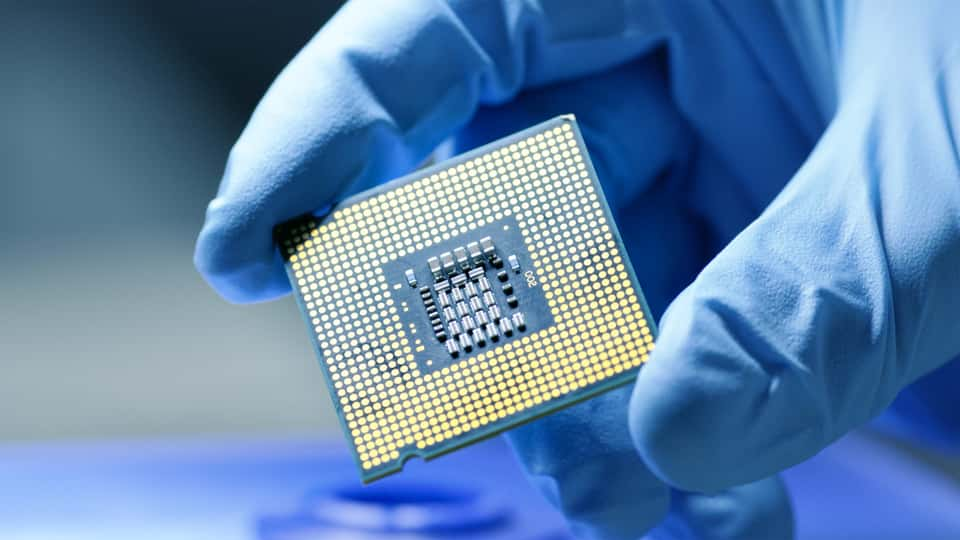Taiwan Semiconductor Manufacturing Company Limited (TSM - Get Rating) in Hsinchu, Taiwan, and Micron Technology, Inc. (MU - Get Rating) in Boise, Idaho, are two prominent players in the global semiconductor industry. TSM manufactures and markets integrated circuits and semiconductor products. It provides wafer manufacturing, wafer probing, assembly, and testing, mask production, and design services. MU, in comparison, manufactures and markets a portfolio of memory technologies for solid-state drives, modules, multi-chip packages, and other system solutions.
Rising demand for tech devices from enterprises and their remote workforces has helped the semiconductor industry see a 29.2% year-over-year improvement in sales in the 2021 second quarter. Also, the resurgence of COVID-19 cases due to the rapid spread of its Delta variant should continue to buoy demand for semiconductors primarily from the consumer electronics industry. Furthermore, the demand for semiconductors should continue growing, driven by the ongoing global digital transformation.
Massive government and corporate investments in the semiconductor industry to address the chip shortage have boosted investor optimism in this space. This is evidenced by the SPDR S&P Semiconductor ETF’s (XSD) 7.2% gains versus the SPDR S&P 500 Trust ETF’s (SPY) 3.5% returns over the past month. According to a WSTS report, the worldwide semiconductor market is expected to grow by 25.1% in 2021 and 10.1% in 2022. As such, both TSM and MU should benefit.
In terms of their past year’s performance, MU is a winner with 59.6% gains, versus TSM’s 40.7%. But, which of these stocks is a better pick now? Let’s find out.
Click here to checkout our Semiconductor Industry Report for 2021
Latest Movements
On August 3, 2021, MU announced the immediate availability of Crucial P5 Plus PCIe SSDs to expand its award-winning NVMe SSD portfolio to offer consumers high-performance internal Gen4 storage options. By leveraging MU’s 176-layer NAND, these SSDs enable lower power, higher speed, and denser storage solutions. Furthermore, by incorporating MU’s advanced 176L 3D TLC NAND and innovative controller technology that allows 66% faster sequential write speeds, these SSDs should be able to capitalize on the growing demand for high-performance storage solutions, owing to rising data-intensive workloads.
TSM and NXP Semiconductors N.V. (NXPI), a Netherlands-based semiconductor manufacturer focusing on the automotive industry, in June released NXPI’s S32G2 vehicle network processor, the S32R294 radar processor, into volume production on TSM’s advanced 16 nm FinFET process technology. S32G2 vehicle networking processors provide secure cloud connectivity and function as high-performance ASIL D safety processors in advanced driver assistance and autonomous drive systems. TSM’s 16nm technology allows S32G2 to consolidate multiple devices into one, creating a powerful System-on-Chip (SoC) that reduces the processor’s footprint.
Recent Financial Results
TSM’s revenue for its fiscal second quarter, ended June 30, 2021, increased 19.8% year-over-year to $13.29 billion. The company’s gross profit has been reported at $6.65 billion, representing a 14.9% improvement year-over-year. Its income from operations came in at $5.20 billion, up 11.1% from the prior-year period. TSM’s net income came in at $4.80 billion for the quarter, representing an 11.2% year-over-year improvement. Its earnings per ADR increased 11.2% year-over-year to $0.93. As of June 30, 2021, the company had $26.69 billion in cash and cash equivalents.
For its fiscal third quarter, ended June 3, 2021, MU’s revenue for its fiscal third quarter, ended June 3, 2021, increased 36.5% year-over-year to $7.42 billion. The company’s non-GAAP gross profit has been reported at $3.19 billion, representing a 76.6% improvement year-over-year. Its non-GAAP operating income came in at $2.36 billion, up 141% from the prior-year period. MU’s non-GAAP net income was $2.17 billion for the quarter, representing a 130.9% year-over-year improvement. Its non-GAAP EPS increased 129.3% year-over-year to $1.88. The company had $7.76 billion in cash and cash equivalents as of June 3, 2021.
Past and Expected Financial Performance
TSM’s tangible book value and total assets have grown at CAGRs of 10% and 14.6%, respectively, over the past three years.
Analysts expect TSM’s revenue to increase 19.7% in the current quarter (ending September 30, 2021), 17.4% in the current year, and 16.3% next year. Its EPS is expected to increase 14.1% year-over-year in the current quarter but decline 44.4% in the current year and 17.8% next year. Analysts expect the stock’s EPS to grow at a 16.1% rate per annum over the next five years.
In comparison, MU’s tangible book value and total assets have grown at at CAGRs of 14.5% and 10.2%, respectively, over the past three years.
Analysts expect MU’s revenue to increase 35.4% year-over-year in the current quarter (ending August 31, 2021), 29% in the current year, and 33.5% next year. Its EPS is expected to increase 115.7% year-over-year in the current quarter, 112.1% for the current year, and 90.6% next year. The stock’s EPS is expected to grow at a 63.6% rate per annum over the next five years.
Profitability
TSM’s trailing-12-month revenue is almost twice what MU generates. TSM is also more profitable, with a 52.4% gross profit margin versus MU’s 33.7%.
Also, TSM’s 29.9%, 13.6%, and 16.5% respective ROE, ROA, and ROTC values compare favorably with MU’s 10.3%, 5.8%, and 6.6%.
Valuation
In terms of non-GAAP forward P/E, TSM is currently trading at 27.76x, which is 137.1% higher than MU’s 11.71x.
In terms of forward EV/Sales, TSM’s 9.01x is 222.9% higher than MU’s 2.79x.
POWR Ratings
While TSM has an overall C grade, which translates to Neutral in our proprietary POWR Ratings system, MU has an overall B grade, equating to Buy. The POWR Ratings are calculated considering 118 distinct factors, each weighted to an optimal degree.
Both have a B grade for Quality, which is consistent with their higher-than-industry profitability ratios. MU’s 43.8% trailing-12-month EBITDA margin is 198.8% higher than the industry average. TSM has a 68.5% EBITDA margin, which is 367.2% higher than the 14.7% industry average.
In terms of Value, MU has been graded a B, in sync with its lower-than-industry valuation ratios. MU’s 2.79x trailing-12-month EV/Sales is 28.1% lower than the 3.87x industry average. However, TSM’s D grade for Value reflects its overvaluation. The company has a 9.01x trailing-12-month EV/Sales, which is 132.6% higher than the 3.87x industry average.
Of the 99 stocks in the B-rated Semiconductor & Wireless Chip industry, TSM is ranked #58, while MU is ranked #40.
Beyond what we’ve stated above, our POWR Ratings system has also rated both MU and TSM for Growth, Momentum, Sentiment, and Stability. Get all TSM ratings here. Also, click here to see the additional POWR Ratings for MU.
The Winner
Huge government and corporate investments to boost production and rising demand from various industries should benefit both TSM and MU. However, better financials and a lower valuation make MU a better buy here.
Our research shows that the odds of success increase if one bets on stocks with an Overall POWR Rating of Buy or Strong Buy. Click here to access the top-rated stocks in the Semiconductor & Wireless Chip industry.
Click here to checkout our Semiconductor Industry Report for 2021
Want More Great Investing Ideas?
TSM shares were trading at $107.97 per share on Friday afternoon, down $2.55 (-2.31%). Year-to-date, TSM has declined -0.39%, versus a 19.21% rise in the benchmark S&P 500 index during the same period.
About the Author: Sweta Vijayan

Sweta is an investment analyst and journalist with a special interest in finding market inefficiencies. She’s passionate about educating investors, so that they may find success in the stock market. More...
More Resources for the Stocks in this Article
| Ticker | POWR Rating | Industry Rank | Rank in Industry |
| TSM | Get Rating | Get Rating | Get Rating |
| MU | Get Rating | Get Rating | Get Rating |






